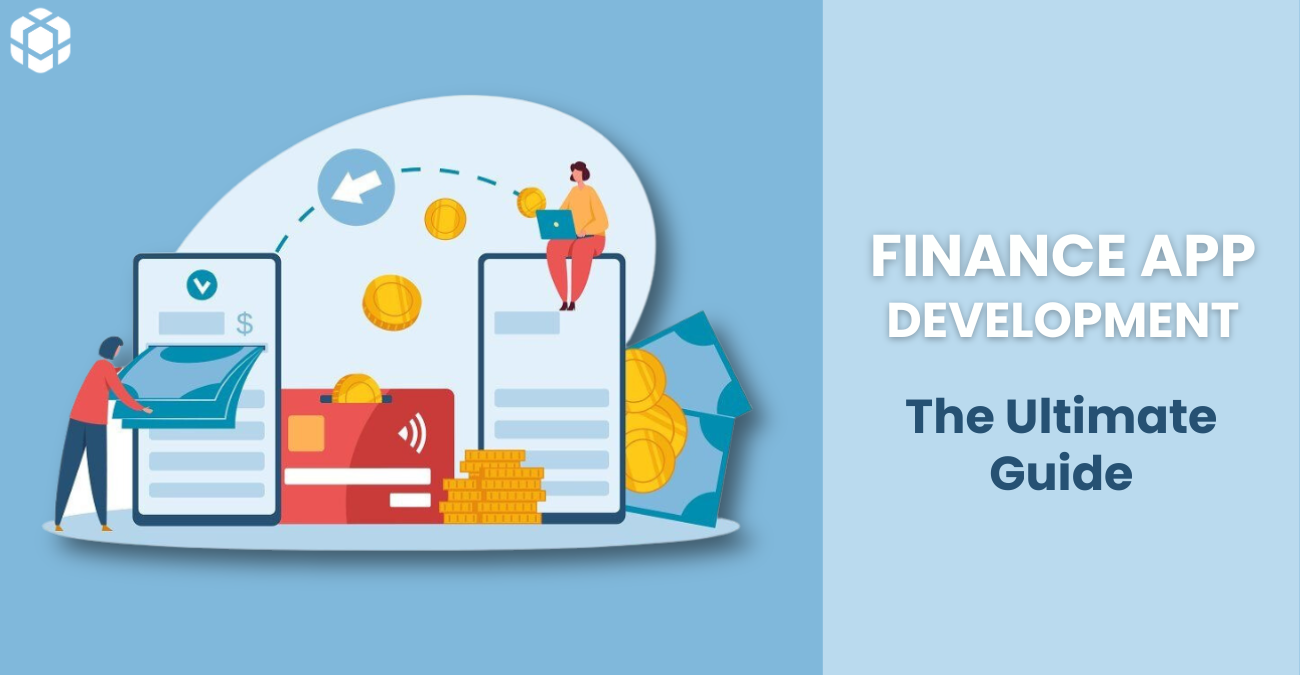
As we move forward in 2023, finance app development is more vital than ever in the financial industry. The demand for finance mobile apps has skyrocketed as users seek accessible, convenient financial services on their smartphones. In this guide, we take an exciting journey into the world of finance app development.
With the financial world constantly evolving, this guide is your compass to understanding and excelling in the world of finance app development. It equips you with the knowledge and strategies needed to handle and thrive in this dynamic arena.
Understanding the Finance App Ecosystem
Before starting the journey of finance app development, it’s important to understand the ecosystem in which your app will operate. Start by identifying your target audience, their financial needs, and the pain points they experience in managing their finances.
Identifying User Needs and Expectations
Your users should be at the center of your finance app development process. Conduct surveys, interviews, and research to gain insights into their financial goals, challenges, and preferences. This will help you tailor your app to meet their expectations effectively.
Choosing the Right Platform
The next step is choosing the platform for your financial app. While developing for both iOS and Android is ideal, you might want to start with one platform to test the waters. Depending on your audience, you can then expand to the other.
Selecting the Right Technology Stack
Selecting the right technology stack is crucial. Popular choices for finance app development include Swift for iOS and Kotlin for Android. Web technologies like React Native and Flutter provide a cross-platform option. Assess the pros and cons of each to make an informed decision.
Designing a User-Friendly Interface
User experience (UX) is paramount when it comes to finance app development. A user-friendly design not only attracts users but keeps them engaged.
User-Centric Design Principles
Implement user-centric design principles by keeping the interface clean, intuitive, and visually appealing. Simplify navigation and ensure that users can access their financial data with minimal effort.
Personalization and Customization
Allow users to personalize their experience. This can include choosing their dashboard layout, setting financial goals, and customizing the app’s color scheme.
Data Visualization
Use data visualization to present financial information clearly. Charts, graphs, and visual representations of income, expenses, and investments can help users better understand their financial situation.
Security and Data Protection
When it comes to finance app development, safeguarding users’ sensitive financial information is non-negotiable. Let’s dive into the essential security measures to keep your app and users’ financial data secure.
Encryption: Protecting the Fort
To fortify your app’s defenses, implement end-to-end encryption. This robust technique ensures that all communication between the app and its servers remains secure and private. By encrypting data during transmission, you prevent unauthorized access and eavesdropping. Rest assured, your users’ financial information remains confidential.
Two-Factor Authentication: The Extra Layer of Security
Consider adding two-factor authentication (2FA) to your app’s security arsenal. 2FA provides an additional layer of protection by requiring users to provide a second authentication method, usually something they have (like their phone). This method often involves receiving a one-time code on their mobile device, further securing their accounts from unauthorized access.
Regular Updates and Patches: Staying Ahead of Threats
Cyber threats are ever-evolving. It’s imperative to stay vigilant by providing regular updates and security patches. These updates address vulnerabilities as they emerge, fortifying your app’s defenses and maintaining the trust of your users. Keeping your app up to date is not only good security practice but also a demonstration of your commitment to user safety.
Core Features for Financial Apps
Financial app development requires a set of core features to meet the financial needs of your users.
- Account Aggregation: Allow users to link their bank accounts, credit cards, and other financial instruments to get a holistic view of their finances.
- Expense Tracking: Include a feature that enables users to track their expenses by categorizing transactions, setting budgets, and receiving alerts when they exceed spending limits.
- Investment Tracking: If your target audience includes investors, incorporate features for tracking investments, viewing stock prices, and receiving market updates.
- Bill Payment and Reminders: Help users manage their bills by offering bill payment and reminders. Allow them to set due dates and get notifications.
- Budgeting Tools: Integrate budgeting tools that enable users to create, customize, and track their budgets easily.
- Report Generation: Provide users with the ability to generate detailed financial reports, which can help them make informed decisions.
- Secure Messaging: Include a secure messaging system to facilitate communication between users and support teams for account-related queries.
- Customer Support Integration: Integrate a customer support system to handle inquiries and issues promptly, ensuring a seamless user experience.
Compliance and Regulation
Navigating the world of finance app development requires compliance with various regulations to protect both users and your business.
- Data Privacy: Ensure your app complies with data privacy regulations like the General Data Protection Regulation (GDPR) and the California Consumer Privacy Act (CCPA).
- Financial Regulations: If your app handles financial transactions, adhere to financial regulations like the Payment Card Industry Data Security Standard (PCI-DSS).
- AML and KYC Regulations: If your app involves money transfers or investments, consider implementing Anti-Money Laundering (AML) and Know Your Customer (KYC) procedures.
Testing and Quality Assurance
Before launching your finance app, rigorous testing is essential to iron out any bugs or issues.
Functional Testing
Conduct functional testing to ensure all features work as intended, from account aggregation to bill payment. Functional testing involves systematically assessing each feature of your app to verify that it performs the functions it was designed for.
This testing ensures that actions like linking bank accounts, tracking expenses, and making bill payments function correctly, offering a seamless experience to users.
Security Testing
Perform security testing to identify vulnerabilities and weaknesses that could be exploited by malicious actors. Security testing is crucial for protecting both your app and the sensitive financial information of your users.
By conducting security assessments, you can pinpoint and rectify potential threats, ensuring that data remains confidential and secure.
Performance Testing
Test the app’s performance under different conditions to ensure it remains stable and responsive. Performance testing assesses how your app behaves under various scenarios, such as high user loads, network fluctuations, or different device types.
This testing guarantees that your app can handle these scenarios without crashing, lagging, or compromising user experience.
User Acceptance Testing (UAT)
Invite a select group of users to test the app, gathering their feedback and making necessary improvements. UAT is a crucial step to ensure that your app aligns with user expectations. These users, representing your target audience, will help identify issues, offer insights, and provide real-world feedback.
Addressing their concerns and making improvements based on their input can significantly enhance your app’s usability and overall quality.
Launching and Marketing Your Finance App
With a fully developed and tested app, it’s time to launch and market it to your target audience.
- App Store Submission: Submit your app to the respective app stores, adhering to their guidelines and requirements.
- Marketing Strategies: Utilize various marketing strategies, such as social media, email campaigns, and influencer partnerships, to create awareness and attract users.
- User Onboarding: Implement a seamless onboarding process to guide users through the app’s features and functionalities.
- Feedback Loop: Establish a feedback loop to gather user insights, address issues, and continually improve your app.
Measuring Success and Continuous Improvement
After your finance app is live, it’s essential to continuously monitor its performance and make necessary improvements.
- Define KPIs such as user engagement, retention rate, and conversion rates to assess the success of your app.
- Pay close attention to user feedback and app store reviews. This valuable information can guide your development team in making improvements.
- Release periodic updates to introduce new features, improve security, and enhance the overall user experience.
- Keep an eye on emerging trends in finance and technology to ensure your app remains relevant and competitive.
Conclusion
In 2023, finance app development offers immense opportunities, but it also comes with challenges, especially in terms of security and compliance. By understanding your users, implementing a user-friendly design, prioritizing security, and offering essential features, your finance app can stand out in the crowded market.
As you start this journey of finance app development, remember that Codesy Consulting, with its expertise in app development, can be your partner in creating a robust and user-centric financial application. Building a finance app is more than just coding; it’s about transforming the financial lives of your users. So, take your time, do it right, and watch your finance app flourish in 2023.





